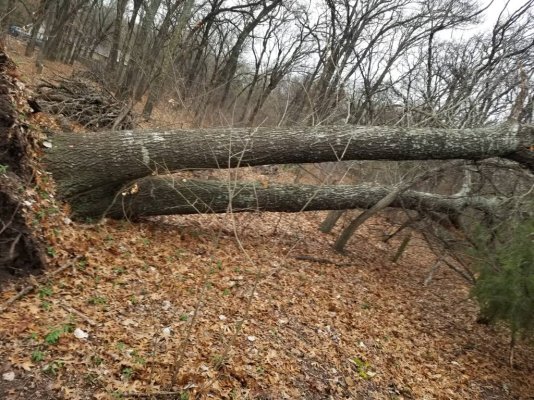Ed B
Recycles dryer sheets
I have been thinning out oak and elm trees in my adjacent acre to open up the dense canopy and allow forage and cover to grow underneath. Mother nature, through very wet soil and gusty winds, gave me an unexpected helping hand about an hour ago.
This is a double trunked red oak that I paced off at over 65 feet. The Trunk diameter about 6 feet above ground level is over 6'6". I will have firewood available after I use up a few chainsaw blades and a huge hole in the canopy that should allow new growth on the ground.
It also took out several smaller oaks and elm trees when it fell. Luckily the fence and any buildings were spared.
I wish I had something or someone standing next to it to provide scale. This is about 10 yards from a spring fed creek. Some of the oaks, elm and cottonwood are ancient and huge. This one isnt ancient but it might be as old as me.
View attachment 30318
View attachment 30319
View attachment 30320
This is a double trunked red oak that I paced off at over 65 feet. The Trunk diameter about 6 feet above ground level is over 6'6". I will have firewood available after I use up a few chainsaw blades and a huge hole in the canopy that should allow new growth on the ground.
It also took out several smaller oaks and elm trees when it fell. Luckily the fence and any buildings were spared.
I wish I had something or someone standing next to it to provide scale. This is about 10 yards from a spring fed creek. Some of the oaks, elm and cottonwood are ancient and huge. This one isnt ancient but it might be as old as me.

View attachment 30318
View attachment 30319
View attachment 30320
Last edited:
